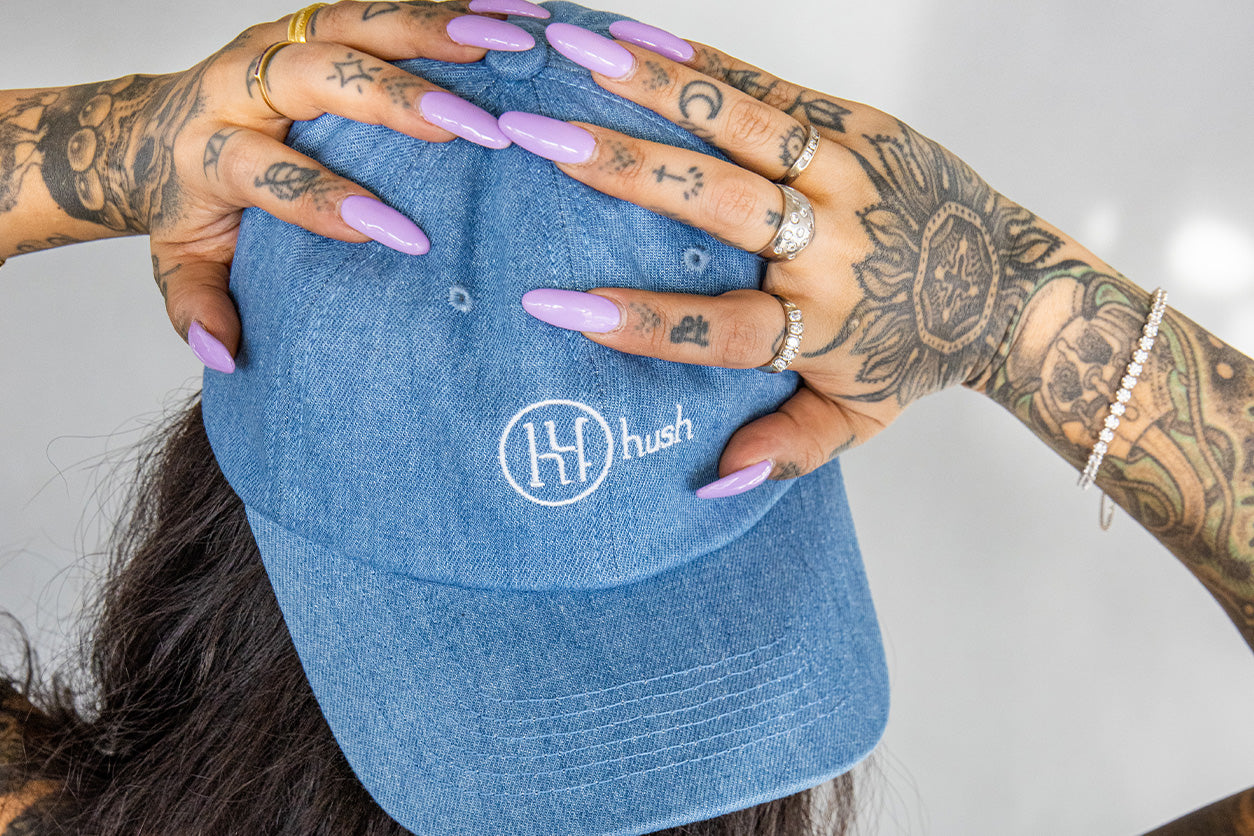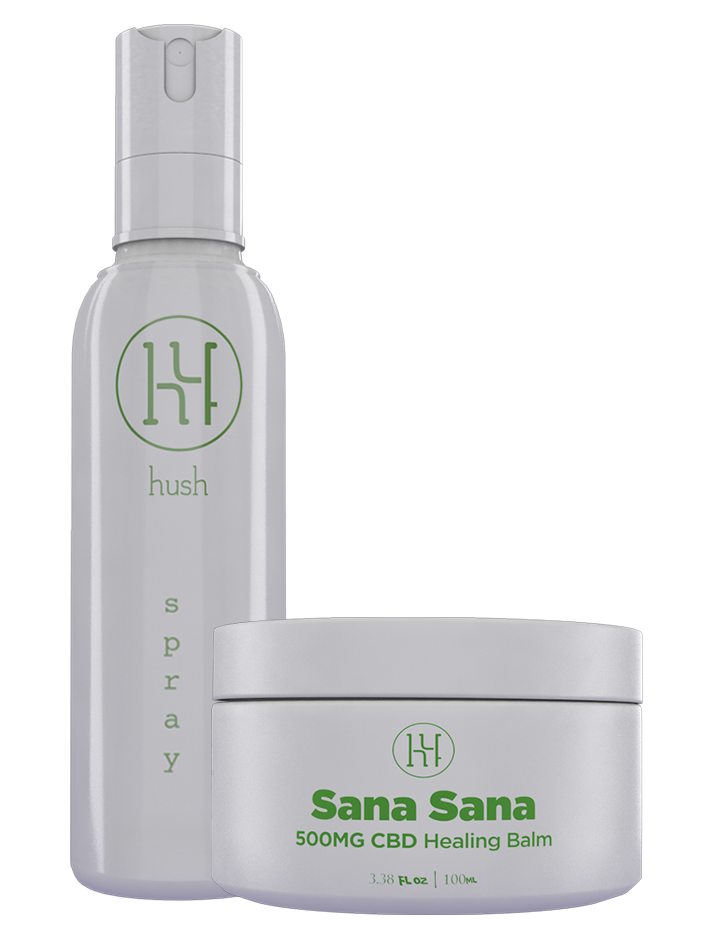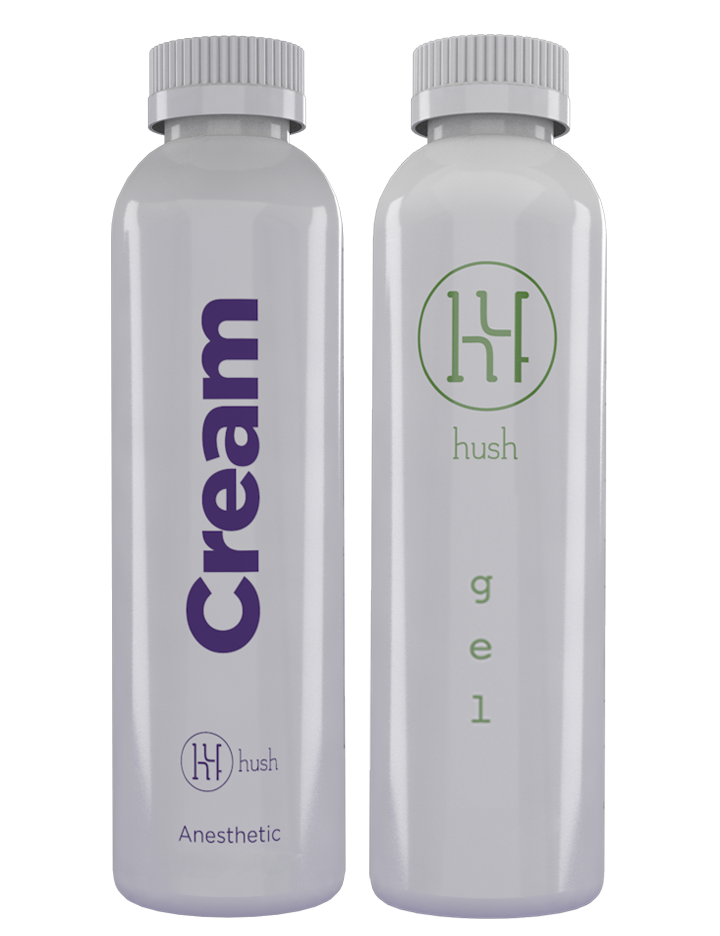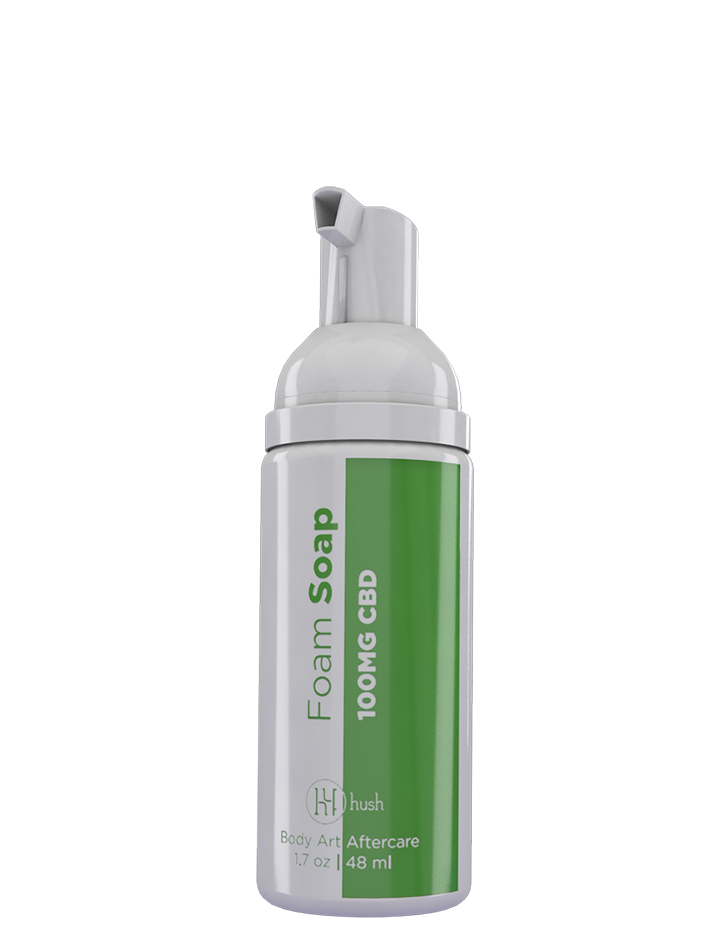So you did your research, you found a reliable artist, you booked the appointment, and now you have the tattoo you’ve been dreaming of. Maybe it’s your first tattoo, or maybe you’re a seasoned pro. Regardless, the days following are important to the healing process, so ensure you prepare with the right information and products!
The HUSH range of tattoo aftercare products will set you up with the tools you need to make it from the dry and peeling stage to a perfectly healed tattoo.
The Days After a New Tattoo
When you leave the tattoo shop, the ink is fresh on your skin, and your new art is stunning. The excitement from the process is lingering, but arguably the most critical part of getting a tattoo is still to come. The days following your tattoo appointment are vital to properly healing your skin.
Changes to your skin can always be slightly unsettling, especially after something as fun as a tattoo. If you do your research, you’ll know what to expect. Then you can take the tattoo journey head-on.
Even if you don’t have an allergic reaction to your tattoo, you should still prepare for your tattooed skin to peel. Before we get into the reasons for this, you must know the normal signs of healing and when you should be concerned.
What’s Normal When a Tattoo Heals?
Most visible healing occurs during the first few days after getting a tattoo. There will be some redness because the skin is recovering. The area around the tattoo might even be raised or slightly swollen, but this is rarely a major issue.
You can also expect your tattoo to feel dry and itchy. As the tattoo dries, the skin begins to peel where it was inked. This is to be expected as the skin heals. Just make sure to resist the itch! Scratching your new tattoo could damage the already fragile skin and affect how your tat heals.
The inked skin and surrounding area will begin to flake and peel. Not to worry, though! This is normal and a sign that your body is restoring the top layer of skin. Even though tattoos are fun, they do temporarily damage the epidermis. The flaking is just the shedding of the damaged skin as your body regenerates a new layer.
What’s Not Normal When a Tattoo Heals?
When we say “not normal,” we mean these symptoms might be signs that your freshly inked skin could need extra help. As always, there’s a chance that your skin might have a negative reaction to a new tattoo. There are several factors that influence how skin responds to the ink.
Allergies are one of the most common issues. Red ink is the most likely shade to cause the skin to react. Usually, a rash will break out in the first days after getting the tattoo, including bumps, itchiness, swelling, and redness.
An unprofessional tattoo shop can also be at fault for a negative reaction to a tattoo. Using unsanitary tools will almost always lead to an infection of the skin. Make sure to do extensive research on the artist and shop to ensure they are reliable and clean.
The Stages of a Healing Tattoo
No matter what kind of tattoo you decide on, you will notice certain signs of healing in the first weeks after getting your tattoo.
The First 24 Hours
The first day with a new tattoo is exciting and maybe a little painful (thankfully, HUSH can help!). The skin surrounding the tattoo will be red, sensitive, and possibly a bit swollen. This is totally to be expected, so no worries!
During this first day, watch for any signs of a rash. Bumps and excessive redness or swelling could be signs of a reaction.
The Following Days
The first two to three days after getting your tattoo will be when much of the healing happens. This is also when your new ink might look the roughest.
During these first few days, your tattoo will be leaking excess ink, especially larger tattoos.
Don’t be alarmed if you notice a little blood along with the leaking ink! This is normal for most people; some will bleed more or less than others. Many people don’t even bleed at all. These first days are when keeping the tattoo covered with some kind of bandage is essential.
The Weeks To Come
Toward the end of the first week, your tattoo is doing most of the top-level healing. Around this time, you can take any bandage off and make washing it your priority.

Using HUSH CBD Foam Soap, gently cleanse the tattoo and the surrounding area. Lather, rinise, and pat it dry with a clean paper towel. Leave it uncovered so it can dry further. This cleanser will help protect the compromised skin from an infection or rash. This is also a vital time for continuous moisturizing.
Aftercare: Why Does the Tattoo Peel?
No matter the size, style, or shading, all tattoos require aftercare. Even the thinnest fine line tattoos peel and heal. Like a sunburn or scratch, proper aftercare prevents scarring and damaged skin.
Think about the last time you got a bad sunburn. On the first day, your skin was red, sensitive, and irritated. You put some aloe on your skin to calm it. Over the following days or weeks, your sunburnt skin might become flakey and dry.
As your skin heals, the epidermis (the top layer) regenerates and creates a new healthy layer of skin. Just like a sunburn, a tattoo causes damage to the top layer of the skin. When you notice peeling, your body is doing its job!
Moisturize

Keeping your skin moisturized is essential. Like dry or sunburnt skin, tattooed skin requires moisture to heal quickly. HUSH CBD Healing Balm is the perfect tool for sealing in moisture.
Our Healing Balm contains natural botanicals to help with healing. Fatty acids in shea butter and rice bran oil protect and moisturize the skin and create a protective barrier.
Don’t Scratch!
It is crucial to be gentle with freshly tattooed skin, especially as it is peeling. It’s tempting to scratch the itchy, flakey skin, but be careful!
Scratching or pulling the flakey skin could damage your new tattoo or scar the skin. It could even lead to an infection if your hands are dirty and the skin is still healing. Just be gentle and only touch the tattoo to clean and moisturize it as it goes through the healing process.
Be Patient
As your skin goes through the usual stages of a healing tattoo, it can be hard to see the light at the end of the tunnel. Your once fresh ink becomes crusty, flakey, and dry. Don’t fear, though. The tattoo will be everything you want it to be in a couple of weeks. The skin will heal, and you can show off your new piece of art.
The Essential Ingredients

The HUSH Aftercare Set provides everything you need post-appointment. From cleansing to pain relief to moisturizing, HUSH will take you through the process. Each product in the Aftercare Set is formulated with natural ingredients and botanicals, and each of the various ingredients serves a purpose in supporting healing your skin, especially through the irritating peeling stage.
- The CBD Healing Balm seals in moisture to protect the tattoo as it dries and peels. CBD and shea butter work in tandem to hydrate and protect the skin.
- The Healing Spray reduces swelling and relieves pain. This is perfect for those first few days.
- The CBD Foam Soap gently cleanses the skin with natural ingredients.
Botanicals With a Purpose
CBD extract keeps the skin hydrated while also reducing swelling and irritation. It is the main ingredient in two of the three products in the Aftercare Set.
You might immediately recognize aloe as something you would use on a sunburn. Aloe soothes and cools redness and irritation, making it a perfect ingredient to calm freshly tattooed skin.
Floral ingredients like marigold extract and chamomile extract work together to reduce both redness and swelling. Marigold has natural cleansing properties.
Green tea extract soothes the skin. Rosemary leaf extract reduces swelling and puffiness. All three products in the Aftercare Set are packed with natural ingredients and botanicals specifically selected to heal your skin naturally.
Heal With No Worries
The healing process quickly follows the fun and excitement of getting a tattoo. These couple weeks can be uncomfortable and itchy. Peeling and flakey skin can be healed effortlessly with HUSH Aftercare Set, so what are you waiting for?
Looking for more tips on aftercare? Click here for the HUSH tattoo aftercare guide!
Sources:




